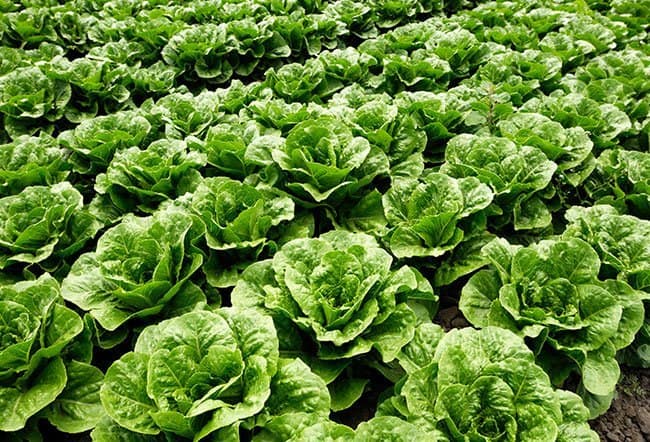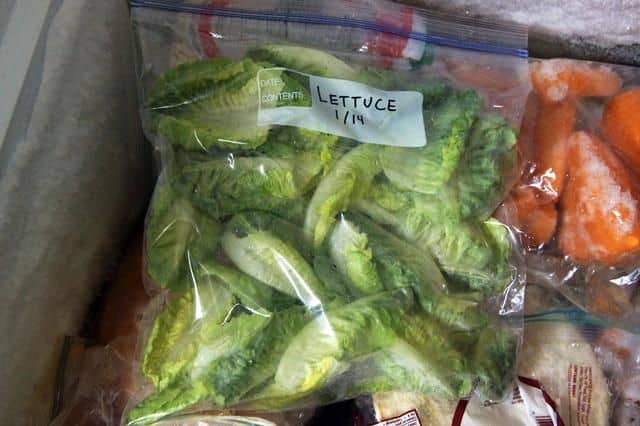Food waste is a serious pet peeve if you’re anything like us. We recognize that sometimes it’s not possible to consume everything we buy before it goes bad, especially greens like Lettuce. But with all the options for storage (including the best methods), there’s no need to throw out delicious produce. So today, we want to answer a question on many of your minds- How to keep Lettuce from turning brown? As it turns out, two main factors can dictate how long it takes for Lettuce to go bad – namely freshness and temperature.

Lettuce is a delicious, healthy, and versatile green leafy vegetable you should enjoy as often as possible. And let’s be honest, it’s good for you too. Various types of lettuce vary in shape, color, flavor, and texture. The good news is that you can prevent your lettuce from going bad altogether by just taking extra care when you store it for an extended time in your fridge. If you grow lettuce in your garden or buy them from the farmer’s market, the way you store them can affect shelf life and flavor. Know some tips on how you can store lettuce for a low time.
You Might Also Like: How To Get Rid Of Crabgrass Without Killing Grass? | The Perfect Methods
How to Keep Lettuce From Turning Brown | What Can You Do?
Although lettuce is often eaten in salads, it can also be used in sandwiches and wraps or as a garnish for various dishes. Lettuce is a non-starchy vegetable that provides almost no calories but has tons of fiber. Lettuce is known to prevent blood pressure from rising and helps against heart disease and kidney stones. Eating lettuce is an excellent way to increase your fiber intake without exceeding your daily limit. Lettuce is also rich in Vitamin A and Vitamin C. But it turns brown very quickly. Stop tossing those sad, brown lettuce leaves in the trash. Now store your produce correctly to keep it fresh and crisp!

The key is storage. Let’s start with the refrigerator: The best place for lettuce is at the bottom of the crisper drawer, where it can stay cold enough without drying out too much. If you like to wash your produce before refrigerating it, be sure to dry each leaf thoroughly before placing it in a plastic bag or container and then stick it in the fridge. However, not all lettuce varieties are created equal. If you think you have a bad case of lettuce rot that develops at the bottom of your refrigerator drawer, don’t toss yet another batch into your crisper drawer. Instead, remember that Romaine can stay a little longer than some other lettuces if they’re stored away from sunlight and heat. Did you know that your lettuce can go bad in as little as 4 hours? That’s why keeping your lettuce fresh for as long as possible is essential.
Tips on How to store Lettuce
- Store Lettuce in the crisper drawer of your fridge and keep air away
- Place a damp paper towel inside a plastic bag and cover the leaves
- Use lemon juice or apple cider vinegar, having acidic properties that can help keep produce fresh
- Sprinkle a little salt or sugar on your lettuce. Both will absorb moisture, which in turn keeps the leaves from wilting.
- Crisper drawer allows moisture to be absorbed from the air so that no wilting occurs
Another way to store your lettuce for a long time in the refrigerator is freezing. Freezing will increase the life of lettuce, and you can enjoy it throughout the month.
Freezing of Lettuce
If you store lettuce in your refrigerator for a long time, we recommend you freeze it first. In this way, the leaves will stay crispy and fresh even when stored cold. However, salting or rinsing the leaves before freezing them is not advised because these methods can cause deterioration in quality due to an accumulation of water droplets on the leaves’ surface, resulting in freezer burn.

Freezing lettuce retains its nutrition and flavor but will become limp and discolored after defrosting unless it was first packed in ice water. For best results immediately after defrosting and before eating, lettuce should be rehydrated by immersing it in ice water for 15 minutes.
Identifying the Right Lettuce
To keep your lettuce fresh for a long time, try to identify and buy only fresh lettuce from the supermarket. Sometimes the lettuce seems fine in the packaging but actually is not fresh. Here are a few tips for identifying fresh Lettuce:
1) Check the leaves for wilted signs: If you’re in a store and have no way to guarantee that the lettuce is fresh, you can always take a look at the outside of the head. If there are signs of wilting, it’s best to choose something else.
Another great way to tell whether lettuce is past its prime is by looking at the leaves. Mangy leaves mean that the lettuce is old. In short, this means that they are either dead or dying.
2) Check the stems: The stems of green lettuce will be sturdy. Stems on any other kind of lettuce will become soft and floppy over time. They should be soft and pliable when fresh, not a bit brittle!
3) Check the leaves for yellowing or browning: If lettuce starts to age, it will start to look yellow or brown. The leaves will also become more prone to wilting over time.
4) Check the packaging: Depending on where you get your lettuce, there are a few things you can do to tell whether they are fresh or not. Based on how the packaging looks, you can determine whether the lettuce is still crisp and fresh or if it’s withering on the stalk.
See Also: Stamped VS Fabricated Deck | A Complete Analysis
FAQs | How To Keep Lettuce From Turning Brown
How to keep lettuce from turning brown in the refrigerator?
Keeping lettuce fresh is easy if you follow these simple steps: Rinse, dry and place lettuce in an airtight container or wrap it tightly in a paper towel. Next, seal the container with a lid or Ziplock bag, removing all excess air. This will keep your lettuce better for up to 5-7 days! Believe it or not, the main reason lettuce turns brown is because of oxidation.
How to keep salad from turning brown?
If you are a salad lover, you know the loathing of tossing a delicious salad that turns brown within minutes. The first thing that you should do is wash the lettuce leaves under running water thoroughly. This will remove any dirt particles, which may lead to the creation of brown patches later on. It also removes most of the chlorophyll in the leaves, which may cause them to turn green and lose their taste.
Conclusion | How To Keep Lettuce From Turning Brown
To conclude the article, we may summarize the tips on how to keep lettuce from turning brown in the following manner.
If bought fresh: As soon as you get home with your newly purchased lettuce, rinse off the dirt, tear it into manageable pieces for storage or salad use, air dry them if you have time, or place them in a salad spinner before storing. If you aren’t using your lettuce for a couple of days, wrap it in a damp paper towel and store it in the crisper drawer of your refrigerator.
If bought from a refrigerator case: Many types of lettuce are sold at supermarkets today; some are very crisp, while others are a bit limp. Lettuce like Romaine will hold up to several days in the refrigerator’s salad drawer, while leafy lettuce tends to wilt quickly. Remove limp or wilted leaves and cut out any brown edges before storing.
Not all types of lettuce turn brown overnight – some only take hours! To make sure your lettuce stays fresh and green for as long as possible, it’s essential to know what type of lettuce you have and how many days you can store it in your refrigerator.
